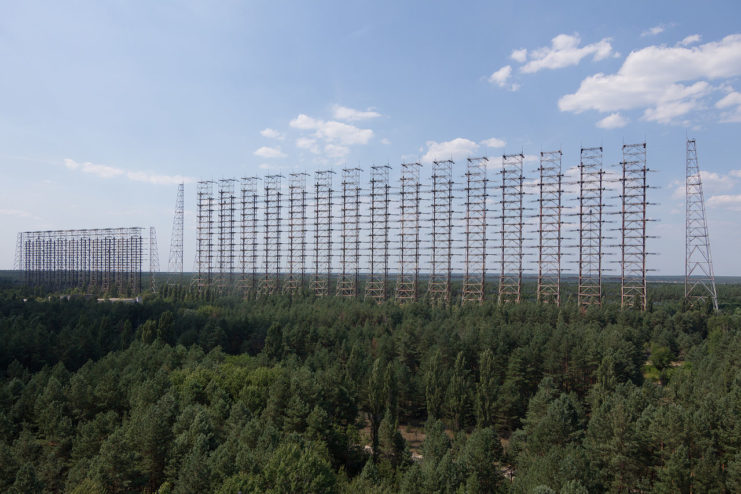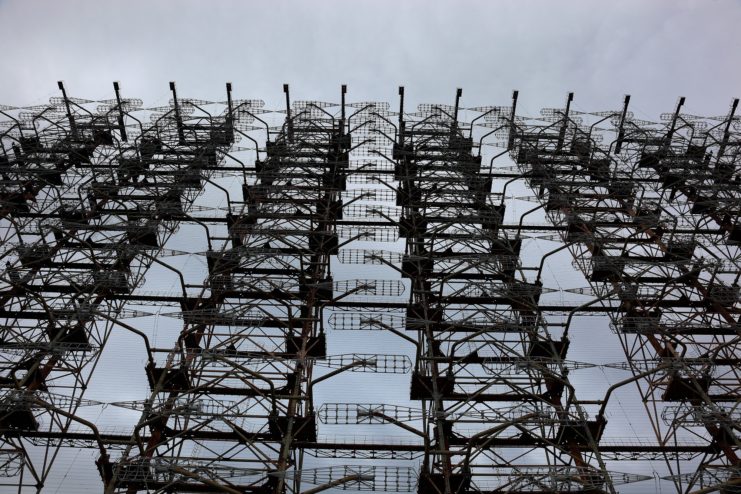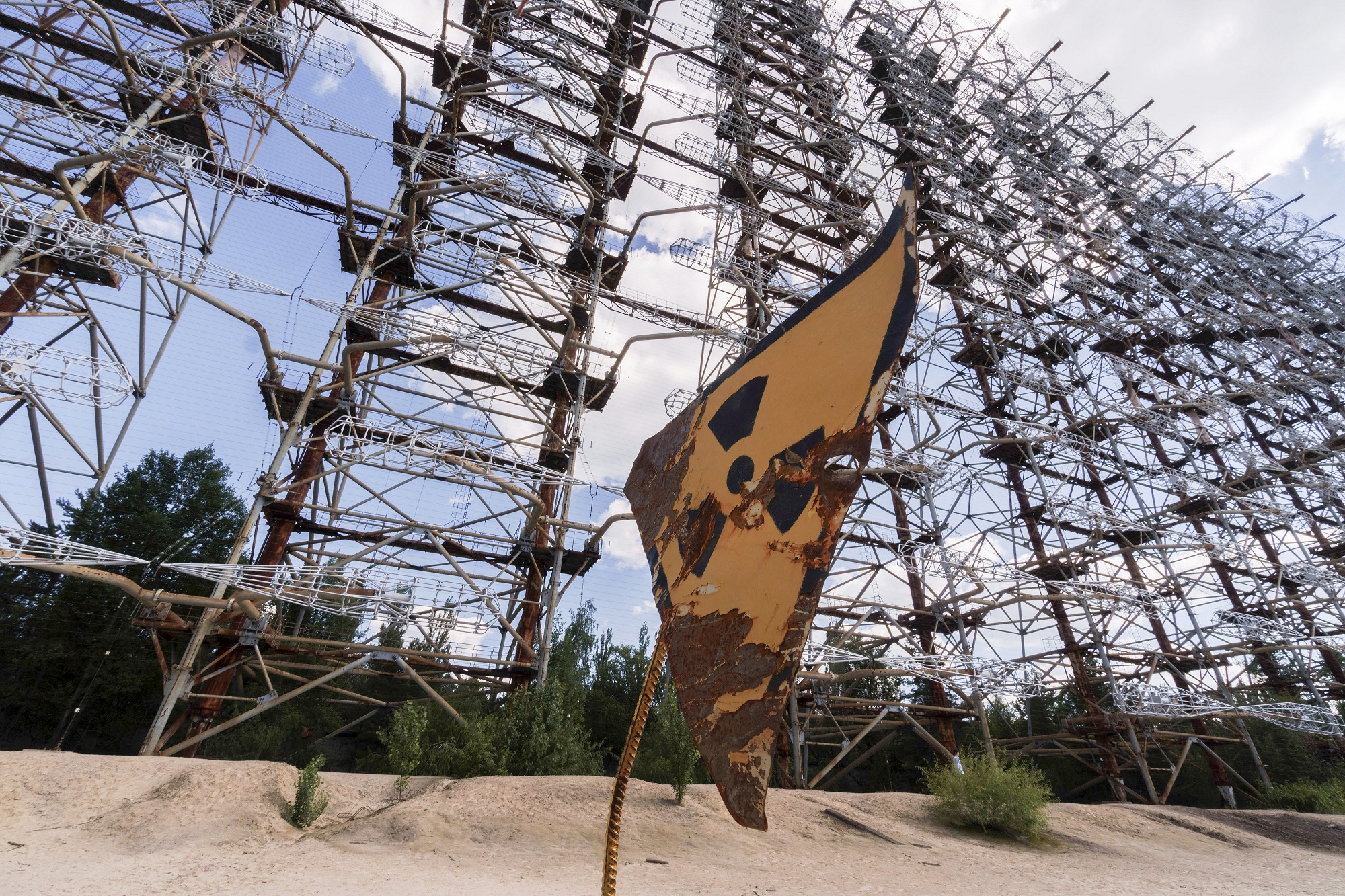From July 1976 to December 1989 a strange noise could be heard on shortwave radios all around the globe. The signal was extremely powerful and was immediately noticed by both amateur and professional radio operators. Even commercial industries and devices in people’s homes were affected by the sound. The noise was a repetitive tapping noise that many believed sounded like a woodpecker or a helicopter. Although it was heard around the world and despised by many, the actual source of the noise was not confirmed until after the Soviet Union had fallen.
Even today, much of the information surrounding the system remains a mystery.
The Russian Woodpecker

Although the source would not be publicly confirmed for years, those in the radio community had already concluded that the noise was produced by an over-the-horizon radar.
This conclusion would prove to be correct.
The source was the Duga radar, a critical part of the Soviet Union’s early warning system to detect incoming missiles. The antenna of the Duga radar was huge; 700 meters long and 150 meters high. Despite the size, the Soviets built two, one near the now-abandoned town of Chernobyl, which was called DUGA-1, and another in Siberia, called DUGA-2.
The radars were protected by their own air-defense systems to ensure their survival during a conflict.
The Chernobyl antenna was pointed north towards the United States, who they believed was the most likely to launch intercontinental-ballistic-missiles at them. Meanwhile, DUGA-2 in Siberia guarded against missiles coming from the east. China and Japan were growing economies at the time, and their military capabilities were growing too, which was a cause for concern for the USSR. DUGA-2 could also detect US missiles coming from the Pacific Ocean.
The sound heard on shortwave radios was a distinctive tapping noise, earning it the name “Russian Woodpecker.”
How did it work?

Each site had a transmitter and receiver, located about 40 miles apart. As a conventional radar can only see as far as the horizon, the Duga radar circumvented this problem by bouncing its signal off the ionosphere, enabling it to see over the horizon. To do this, an enormously powerful transmitter is required. The Duga system was able to transmit at 10 MW of power.
The goal of the system was to detect an attack within the first two or three minutes after a missile had been launched.
The Soviets had been experimenting with early warning radars for a while before the Duga system was put into action. The first prototype system was named Duga, meaning “arc,” a name that would be carried over to the later completed radars.
This earlier system was located in Southern Ukraine, and was reportedly able to detect rocket launches at the Baikonur Cosmodrome 1,600 miles away. A second prototype was able to detect missile launches from as far away as the Pacific Ocean.
The mystery of the Russian Woodpecker

When the signals began in 1976, they were immediately heard around the world. The signal was so incredibly strong that it interfered with commercial aviation and shipping communications, civilian communications and even disrupted television broadcasts. This prompted thousands of complaints.
As mentioned, no one knew the exact source of the sound, but experts quickly established that the sound must be an over-the-horizon radar system.
Naturally, the Duga systems were an extremely closely guarded secret. After the transmissions began, both amateur radio enthusiasts and NATO were able to triangulate the position of the radars inside the Soviet Union. Many countries complained to the USSR about the short-wave tapping sound, but they denied its existence. Even Soviet maps listed the location as a children’s camp.
One unconfirmed story details how when one of the first US journalists allowed into Chernobyl after the meltdown asked about the huge structure on the horizon, he was told it was an unfinished hotel.
Although people knowledgeable with radios knew the Russian Woodpecker was some form of over-the-horizon radar, conspiracy theories began running rampant amongst the public. Ideas of mind and weather control were tossed around, while others feared the signal would destroy brain cells.
The Chernobyl site would continue to be used until the nuclear disaster happened nearby, causing the Soviets to shut it down.
More From Us: Dangerous Drops and Secret Radars: The Story of Operation Biting
Although the US were comfortable in their conclusion, they would not receive official confirmation until the Soviet Union collapsed in the 1990s. Even then, the exact details of the system still remain a mystery. The documents that contain information about the Duga radars and how they were used have either been destroyed or locked away long ago.
Today, the mystery of the Russian Woodpecker has been solved, but its eerie structure remains, rusting quietly away in the Chernobyl exclusion zone.
